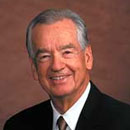How to Become a Certified Timber Cruiser: A Step-by-Step Guide
Published in Business Articles
Timber cruising is a fascinating career that combines outdoor adventure with science.
A timber cruiser surveys forests to estimate timber volume, type, and quality. This essential role helps manage forestry resources sustainably. If you’re drawn to nature and data collection, becoming a certified timber cruiser could be the perfect path for you.
This guide will break down the steps to help you start your journey.
Step 1: Understand the Role of a Timber Cruiser
Before pursuing this career, it’s essential to know what a timber cruiser does. They work in forests, hiking through rugged terrain to measure and record data about trees. This includes:
- Identifying tree species
- Measuring tree height, diameter, and volume
- Evaluating forest health
Timber cruisers use this data to help foresters, loggers, and landowners in effective forest management. It’s a mix of physical labor, technical knowledge, and environmental stewardship.
Step 2: Gain the Required Education
A college degree isn’t always required, but it can give you an edge. Many timber cruisers have backgrounds in:
- Forestry
- Environmental science
- Natural resource management
- Forest management
Community colleges and universities often offer programs that include courses in dendrology (tree identification), forest measurements, and GPS navigation.
Step 3: Build Practical Skills
The work of a timber cruiser involves more than knowing about trees. You’ll need specific skills, such as:
- Mapping and navigation
- Measuring tools
- Data recording
To develop these skills, consider volunteering or interning with forestry organizations or logging companies.
Step 4: Get Certified
While certification is not required in all areas, it can significantly enhance your credibility and job prospects. Some states or forestry organizations offer certification programs that test your ability to:
- Identify trees and measure them correctly
- Follow legal guidelines for timber surveying
- Use specialized tools effectively
Research the specific requirements in your area or industry to determine which certification is most relevant.
Step 5: Acquire the Right Gear
Timber cruising involves working in remote and often rugged environments, so having the right gear is essential for safety, efficiency, and accuracy. Here’s what you’ll need:
Safety Equipment
Working in the forest can present challenges, from uneven terrain to falling branches. Protect yourself with the following:
- Durable Boots
- Hard Hats
- Protective Clothing
Forestry Tools
The right tools ensure you can gather precise data efficiently. Some essential tools include:
- Diameter Tapes
- Clinometers
- Increment Borers
Navigation Aids
Navigating dense forests can be tricky, so reliable navigation tools are a must:
- GPS Devices
- Maps
- Compasses
You can find professional-grade gear at forestry supply stores. For example, you can shop forestry supplies here, like diameter tapes, clinometers, and increment borers can be purchased from these stores to ensure you’re fully equipped for the job
Step 6: Gain Experience
Landing your first job may require you to start in an entry-level forestry position, such as a forestry technician. These roles provide hands-on experience with tools, mapping, and data collection. Over time, you’ll build the expertise to work independently.
Step 7: Network in the Forestry Community
Networking can open doors in the forestry industry. Join professional organizations like the Society of American Foresters (SAF) to meet experienced professionals and stay updated on industry news. Attend forestry expos and workshops to learn about advancements and connect with potential employers.
Start Your Journey as a Timber Cruiser
Becoming a timber cruiser requires dedication, training, and love for the outdoors. From understanding the role to gaining certification and practical experience, every step you take brings you closer to a fulfilling career. Invest in quality tools and build connections in the forestry community to set yourself up for success.
Got questions? We’ve got answers! Check out our blog for loads of interesting and helpful content today











Comments